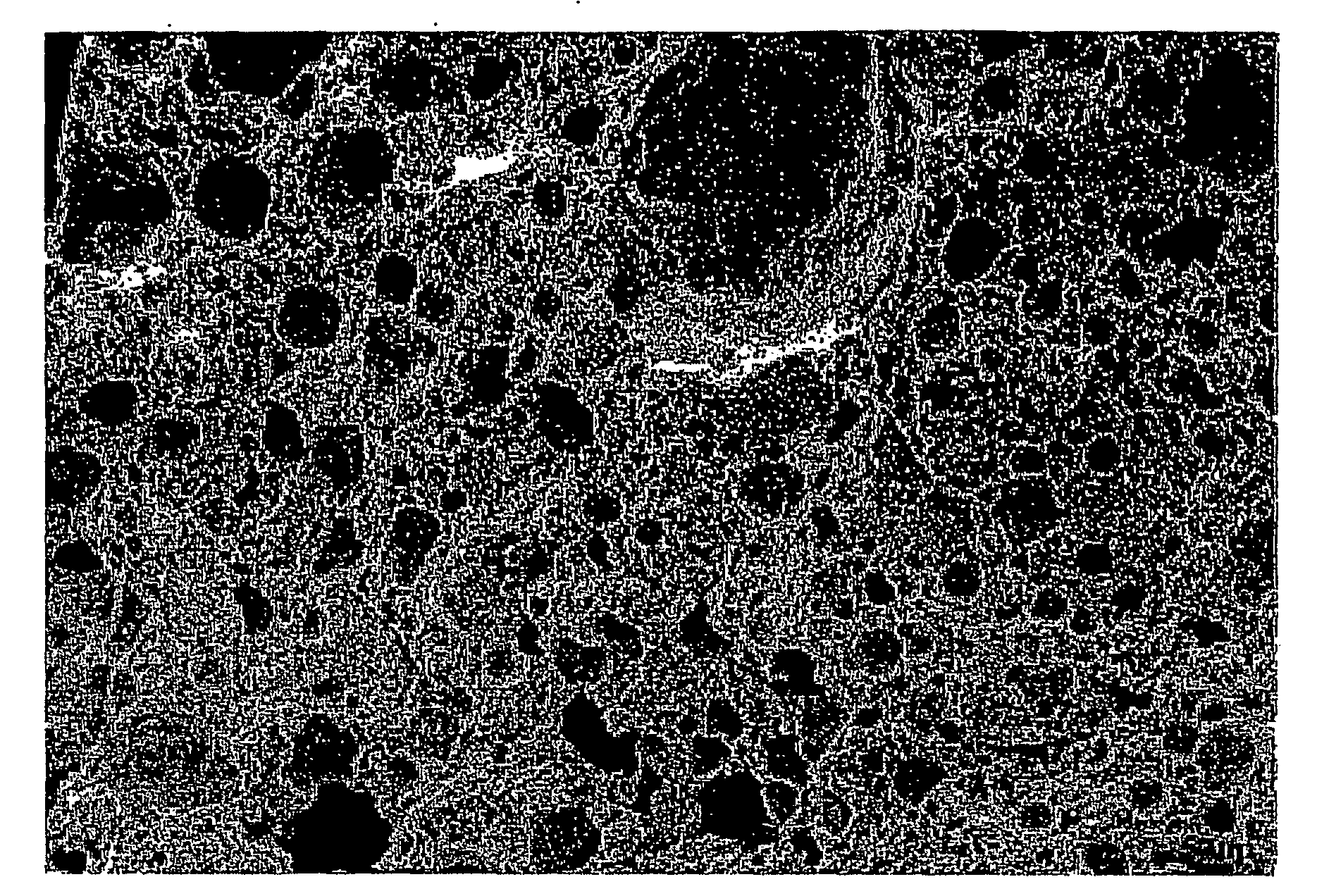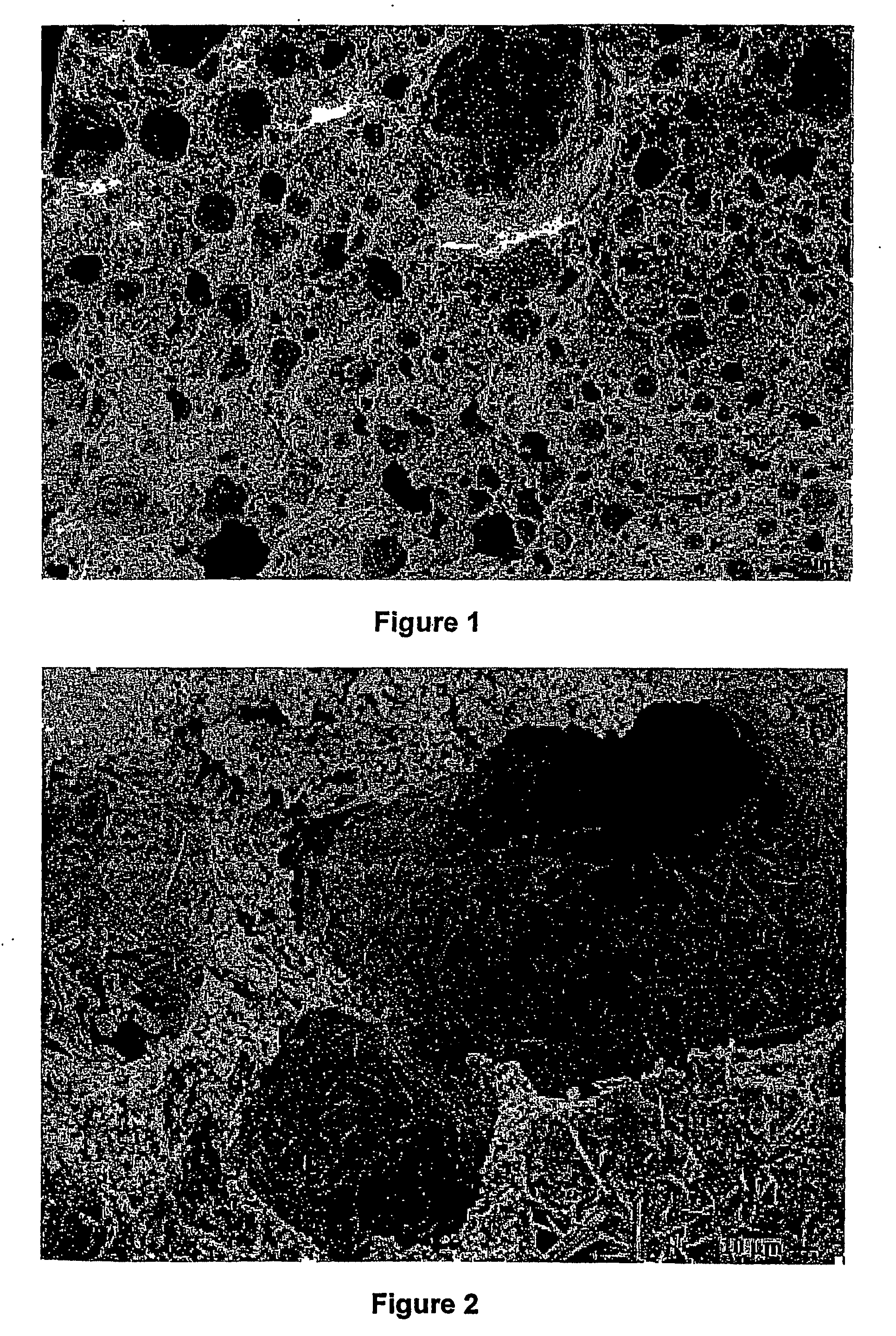Porous Particulate Material For Fluid Treatment, Cementitious Composition and Method of Manufacture Thereof
a technology of porous particulate material and fluid treatment, which is applied in the direction of energy-based wastewater treatment, water/sewage treatment by ion exchange, solid waste management, etc. it can solve the problems of high ecological toxicities of trace metals, high environmental toxicities, and potential environmental hazards, so as to reduce the initial setting time and increase the workability of wet mixtures , the effect of increasing the binding strength
- Summary
- Abstract
- Description
- Claims
- Application Information
AI Technical Summary
Benefits of technology
Problems solved by technology
Method used
Image
Examples
example 1
Scanning Electron Microscope Investigation of Internal Porosity of Developed Pellets
[0197]Two pellets were made using the following methodology.
Pellet 1 was made by mixing the following components to form a slurry
[0198]80 g treated red mud
[0199]4 g hydrated lime
[0201]2 g HPMC plasticiser / polymeriser,
[0202]15 g portland cement;
[0203]8 g silica sand of dry ingredients
[0204]70 mL of water,
[0205]8 mL of 3% H2O2, and
[0206]0.22 mL of 1.5M H3PO4
[0207]The above components were mixed in a shear-force mixer for one minute. The wet slurry was poured into a mould with a height to diameter aspect ratio of 3.5:1 and was restrictively capped and allowed to cure for 28 days.
Pellet 2 was made by mixing the following components to form a slurry:
[0208]70 g treated red mud
[0209]2 g HPMC plasticiser,
[0210]15 g Portland cement,
[0211]13 g of silica sand
[0212]70 mL of water,
[0213]0.8 mL of 3% H2O2, and
[0214]0.22 mL of 1.5M H3PO4,
[0215]The above components were mixed in a shear-for...
example 2
Treatment of a Metal-Rich Tannery Effluent Using a Column Constructed of Porous Pellets
[0218]Referring to FIG. 7, there is shown a schematic diagram of laboratory apparatus that was use to obtain the results of Example 2. This trial used pellet 1, as given in Example 1 above, which was lightly crushed and sieved to give material in 4 grainsize ranges, of 250 μm to 500 μm, 500 μm to 750 μm, 750 μm to 1000 μm, and 1000 μm to 2000 μm. A pellet mix each of 25% of each of the 4 grainsizes was made to provide the filtration / reaction column (10). Three filtration / reaction columns (10, 20, 30) were constructed using polycarbonate tubing with an internal diameter of 44 mm. Each column (10, 20, 30) was sealed at one end and was packed with a 10 cm long coarse sand and gravel mixture (12) to act as a pre-filter, a geotextile wadding, a 5 cm long section of treated red mud pellets (14) another geotextile wadding (16), an other 10 cm long coarse sand and gravel pack to hold the treated red mud p...
example 3
Directions for Making Batches of Porous Pellets in a 4 m3 Cement Mixer
Ingredients
[0220]2000 kg of A1 treated red mud screened to <2 mm
400 kg of ordinary portland cement:
250 kg of finely ground silica sand:
100 kg of hydrated lime screened to <1 mm:
200 kg of magnesium oxide screened to <1 mm:
50 kg of hydro-propyl methyl cellulose (HPMC) plasticiser:
About 2000 L of water:
25 L of 3% hydrogen peroxide (H2O2):
7 L of 1.5 M orthophosphoric acid (H3PO4):
Total weight of dry products: 3,000 kg
Total weight wet products: about 2,032 kg
Total wet weight: about 5,032 kg (2 m3)
[0221]It should be appreciated that it is optional to use dry treated red mud as indicated above. Treated red mud with a moisture content of about 50% could be used instead, but the amount of water to be added would need to be reduced in direct proportion to the amount of water included with the treated red mud. Washed treated red mud is not required but the treated red mud must be treated. For example, if the treated red mud ...
PUM
| Property | Measurement | Unit |
|---|---|---|
| Fraction | aaaaa | aaaaa |
| Fraction | aaaaa | aaaaa |
| Fraction | aaaaa | aaaaa |
Abstract
Description
Claims
Application Information
 Login to View More
Login to View More - R&D
- Intellectual Property
- Life Sciences
- Materials
- Tech Scout
- Unparalleled Data Quality
- Higher Quality Content
- 60% Fewer Hallucinations
Browse by: Latest US Patents, China's latest patents, Technical Efficacy Thesaurus, Application Domain, Technology Topic, Popular Technical Reports.
© 2025 PatSnap. All rights reserved.Legal|Privacy policy|Modern Slavery Act Transparency Statement|Sitemap|About US| Contact US: help@patsnap.com



